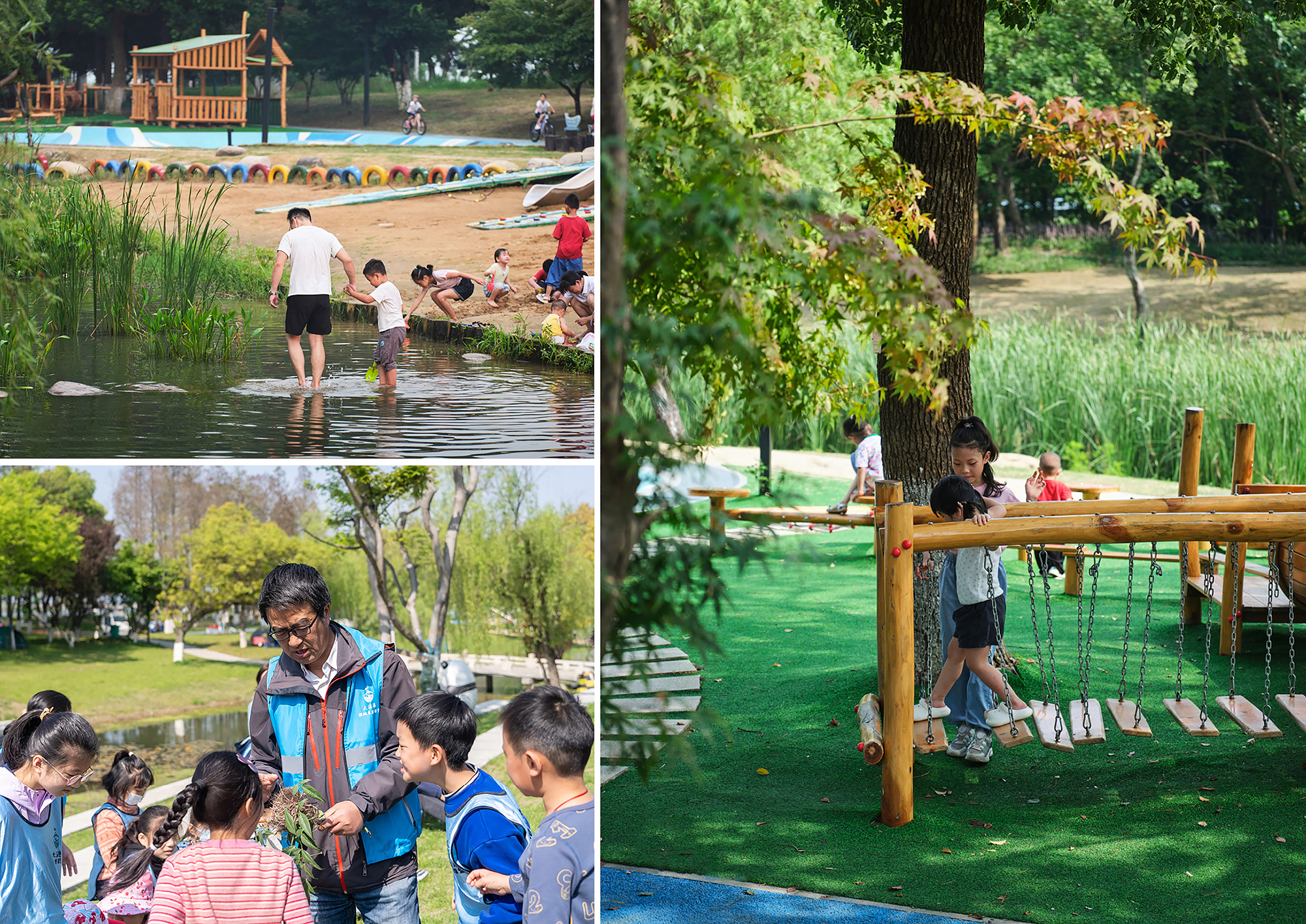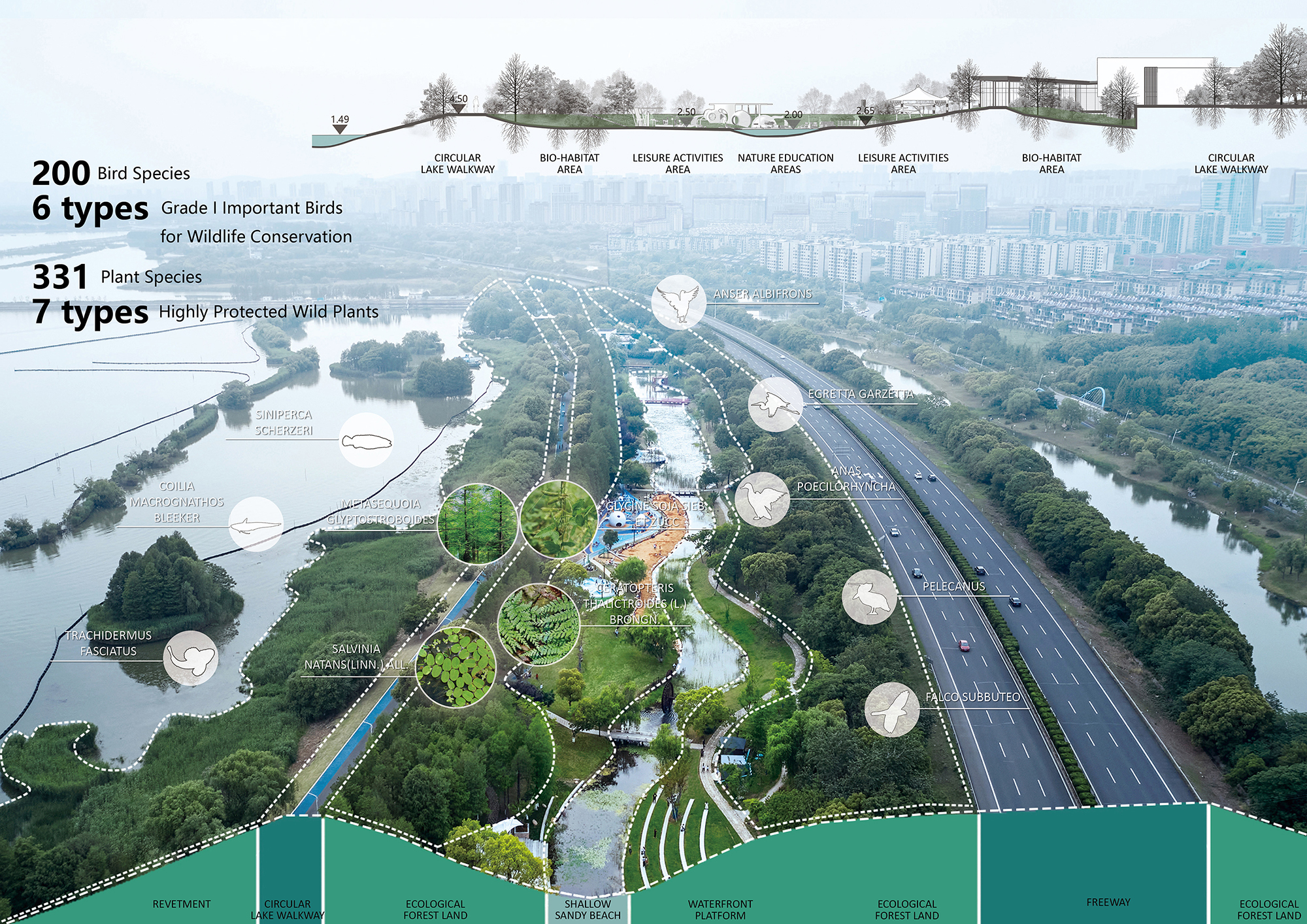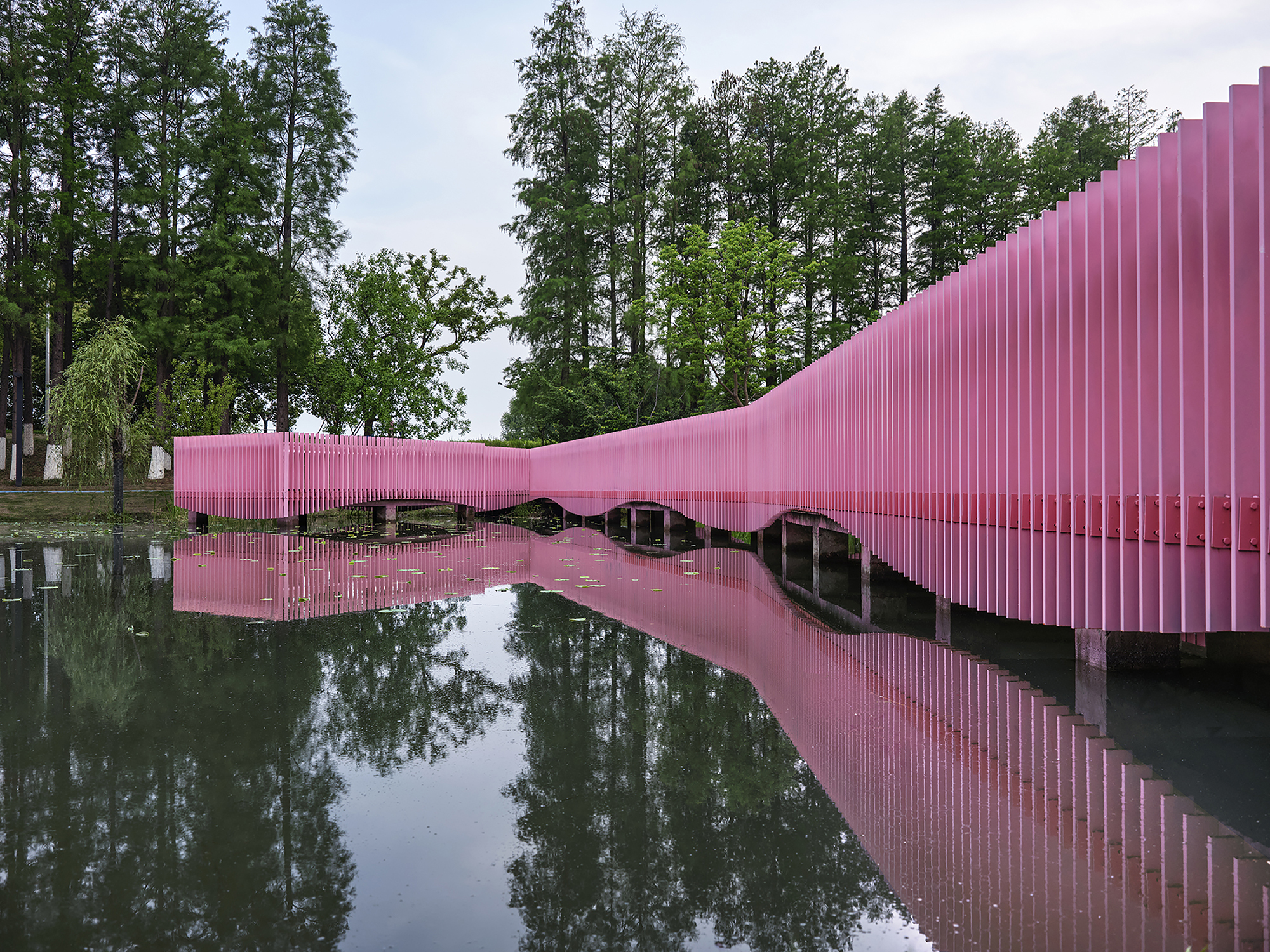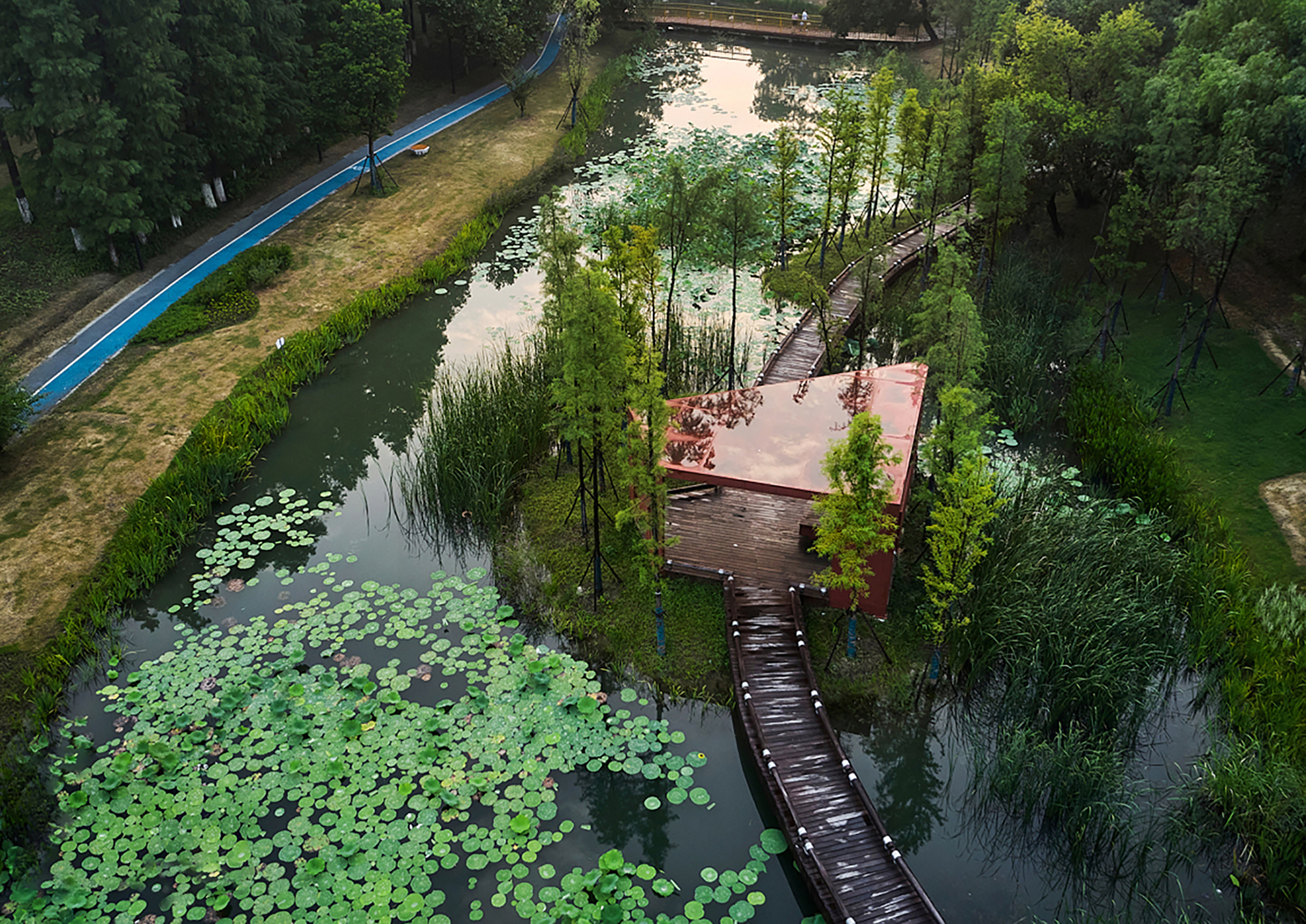Daxi Port Lake Bay Children’s Friendly Wetland Park: Reconnecting Children with Nature
Tus-Design Group Co. Ltd


Short description
Situated in Wuxi City, Jiangsu Province, China, the Daxi Port Lake Bay Children's Friendly Park is nestled alongside Gonghu Bay, a scenic part of the vast Lake Tai — the third-largest freshwater lake in the country. In 2007, Lake Tai suffered a severe blue algae pollution outbreak, leading to city-wise widespread water contamination and water shortages. This crisis initiated the ecological restoration and rehabilitation of Daxi Port — a transformation involving farmland reclamation, fishing reduction, and residential relocation to build ecological protective forests and green spaces. The improved ecological environment has spurred regional development and population growth, leading to a heightened need among the nearby communities and urban residents for more vibrant park spaces where they can engage in leisure and social activities. Existing parks urgently required improvement.
Complex Site Conditions & Abandoned Park
The park is a long, strip-shaped space, stretching approximately 1300 meters in length and varying between 20 to 50 meters in width, encompassing two triangular areas that are particularly challenging to utilize. The park's facilities were outdated, with a lack of prominent signage, significant variations in ground levels, obstructed views, and a scarcity of spaces for lingering and activities, all contributing to its dormant state. Although there are many well-grown trees within the site, the overall diversity of plants around the river channel is lacking. There are grassy lawns without aquatic plants leading into the water's edge, and the shallow water zones that provide food and resting spots for animals and birds are absent.
One of the primary challenges in creating an active and vibrant children's park for the community and the city was how to appropriately integrate the most suitable functions into different sections. This included addressing the site's varied elevation transitions, preserving the existing trees to the greatest extent possible, protecting the original ecological foundation and the memory of the original site, and creating habitats for wildlife.
Child-friendliness & Ecological Priority
The design team, centering their approach around concepts of ecological priority, child-friendliness, and urban slow mobility, structured the park's layout and facilities using a point-line-plane architectural framework. By surveying and mapping the existing trees, these natural elements served as the foundation for organizing traffic and functional spaces, aiming to minimize the landscape design's intervention as much as possible. The team introduced nearly a hundred varieties of plants, with a focus on enhancing the diversity of fall foliage, shoreline plants, and aquatic species. This effort has created numerous microhabitats for animals, increasing ecological diversity and species resilience.
During the design process, the team paid great attention to the desires of children, parents, and teachers. By tailoring the design to the site's unique characteristics, they transformed it into a more child-friendly environment. The park now features an ecological beach, a wetland classroom, a grass-stepped theater, a sail-themed birdwatching platform, an interactive water wheel, and other playful and educational spaces for children, effectively rebuilding the connection between children and nature.
The park-wide lakeside walking path embodies the sustainable concept of “low-carbon slow movement.” It not only offers safe and accessible routes for visitors of all ages but also creates a multi-dimensional visual corridor that enhances the overall park experience.
A Living Natural Museum
The park, with its diverse ecological environments like lakes, ponds, rivers, shallows, reed marshes, lawns, and forests, has become a haven for flora and fauna. Various wild bird species, including six that are nationally protected, have been observed here, making bird-human interactions a daily park occurrence. In total, nearly 200 bird species and 331 plant species, including seven nationally protected, have been documented. Under the umbrella of abundant natural resources, the design vision for nature-based science education can be more effectively realized.
A Child-Friendly Wilderness Playground
The park has preserved the existing metasequoia glyptostroboides forest, transforming it into a play and rest area for children with organized ground vegetation and balancing wood facilities. The transformation of a 3-meter-tall neglected grassy slope has given rise to a natural outdoor theater and classroom. This has been achieved by adding tiered stone steps, creating shallow water zones along the riverbank, and planting aquatic plants. The result is an engaging environment featuring a children's water play area, a playful sand beach, and interactive water wheels. Here, children can splash in the water, roll up their sleeves, wade, have water fights, and observe aquatic plants and wildlife. Sunny lawns and large children's play equipment cater to children of various personalities, offering freedom and fun.
A Low-Carbon Park for All Ages
The design team utilized the existing Lake Tai embankment to embed a 13-kilometer-long fitness trail around the lake, connecting each ecological area and landscape node. This green corridor provides exercise and relaxation spaces for residents and tourists, opening up vistas of Lake Tai's beauty. Along the lakeside trail, there are families with strollers, groups of friends walking side by side, elderly people taking leisurely strolls, and joggers pacing themselves.
Expanding Education & Evoking Respect for the Lake
Daxi Port Lake Bay Children's Friendly Wetland Park is Wuxi City's first nature park themed around children, establishing a natural education and practice base that integrates environmental science, all-age amusement, and family leisure. Since its opening six months ago, the park has hosted numerous natural science activities, engaging nearly a thousand young people and children. These experiential activities aim to inspire a new generation to become future guardians of our natural ecological environment.
The wetland park has also become a multifunctional "living room" for citizens and tourists, acting as the city's ecological backyard. It stands as a testament to the successful pollution control and ecological restoration of Lake Tai. With its rich ecological experiences and activity spaces, the park creates a unique sense of place and evokes respect for the water bodies we depend upon.
Entry details


















